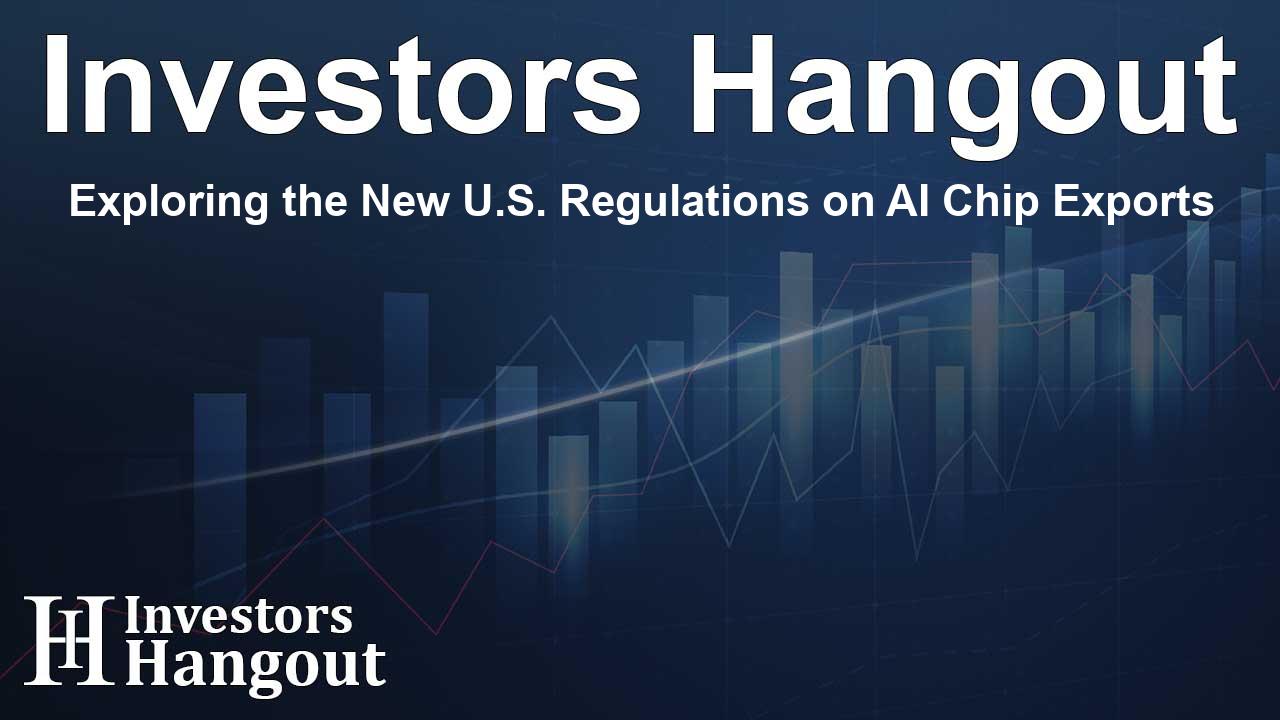Exploring the New U.S. Regulations on AI Chip Exports

Understanding U.S. Regulations on AI Chip Exports
The U.S. government has taken significant steps to control global access to artificial intelligence (AI) chips and technology, announcing new regulations aimed at ensuring the security and advanced development of AI. These changes will impact how other countries access U.S.-designed AI technology.
What Chips Are Affected by the New Regulations?
At the heart of the regulations are graphics processing units (GPUs), which are specialized chips originally designed to enhance graphics performance. While they have a solid reputation in gaming, GPUs produced by U.S.-based companies, notably Nvidia (NASDAQ: NVDA), have become essential for training AI models due to their ability to process vast amounts of information concurrently.
Impact on AI Development
Training advanced AI models, such as OpenAI's ChatGPT, relies heavily on the power provided by thousands of GPUs working in tandem. The new regulations introduce limits on the types of GPUs that can be exported, which could lead to significant ripple effects on global AI development projects.
How Does the U.S. Plan to Manage AI Chip Exports?
With an aim to tighten control over AI technology access, the U.S. plans to expand restrictions on advanced GPUs pivotal for building the infrastructure necessary for AI training. The regulations set thresholds based on the computational power of these chips, limiting access particularly for nations considered to be high-risk.
Metrics and Restrictions
The processing performance (TPP) metric identifies how powerful a chip is. According to experts, countries with caps on compute power are limited to a total of 790 million TPP through 2027. This amount is roughly equivalent to nearly 50,000 H100 Nvidia GPUs, a level sufficient to support extensive AI applications worldwide, from advanced chatbots to sophisticated inventory management systems.
Export Caps and Exceptions
The U.S. regulatory framework includes specific caps but also offers exceptions. For instance, organizations such as Amazon Web Services or Microsoft (NASDAQ: MSFT) that qualify for special authorizations can exceed these caps. This move encourages firms to comply with U.S. standards while promoting legitimate business operations.
National Authorizations and Their Benefits
Companies fortunate enough to operate in nations not classified as a “country of concern” may receive national authorizations, allowing them to utilize a defined number of advanced GPUs without falling under the strict limitations. This approach provides further insight to U.S. authorities into who is using these technologies, curbing potential misuse.
Clarifying Licensing Exceptions
Interestingly, there are provisions for smaller GPU orders. Purchases involving up to 1,700 H100 chips require only a government notification rather than a formal license. This exception aims to hasten the global shipment of low-risk chips, essential for educational and research institutions.
Who Can Receive Unlimited AI Chips?
A total of eighteen destinations, including allies like Canada, Australia, and several European nations, will be exempt from country-specific caps. This strategic choice underscores the U.S.'s intention to bolster partnerships with countries that are seen as crucial in the AI landscape.
Protecting AI Model Weights
Additionally, the U.S. is regulating what's referred to as "model weights". These are key elements of AI models integral to their performance. The new rules aim to establish security standards that guard these weights, particularly for proprietary models that are not publicly available.
Securing Advanced AI Development
The overall goal of these regulations is to foster the secure development and deployment of advanced AI technologies within trusted jurisdictions. As AI rapidly evolves, these measures will be pivotal in shaping the global AI market and determining how technology flows across borders.
Frequently Asked Questions
What is the purpose of the new U.S. regulations on AI chips?
The regulations aim to control access to advanced U.S.-designed AI chips and ensure that AI technology is developed securely.
Which specific type of chips are restricted?
The regulations primarily focus on graphics processing units (GPUs), which are essential for AI training and applications.
How do the restrictions impact GPU access for countries?
Countries classified as high-risk will face strict limits on GPU exports, while allied nations may have more lenient access.
Are there exceptions to these regulations?
Yes, there are exceptions for smaller GPU orders and for companies meeting specific authorization criteria that allow them to exceed cap limitations.
What are model weights, and why are they regulated?
Model weights are crucial components of AI models, and the regulations seek to secure these parameters to enhance the overall safety of AI development.
About Investors Hangout
Investors Hangout is a leading online stock forum for financial discussion and learning, offering a wide range of free tools and resources. It draws in traders of all levels, who exchange market knowledge, investigate trading tactics, and keep an eye on industry developments in real time. Featuring financial articles, stock message boards, quotes, charts, company profiles, and live news updates. Through cooperative learning and a wealth of informational resources, it helps users from novices creating their first portfolios to experts honing their techniques. Join Investors Hangout today: https://investorshangout.com/
Disclaimer: The content of this article is solely for general informational purposes only; it does not represent legal, financial, or investment advice. Investors Hangout does not offer financial advice; the author is not a licensed financial advisor. Consult a qualified advisor before making any financial or investment decisions based on this article. The author's interpretation of publicly available data shapes the opinions presented here; as a result, they should not be taken as advice to purchase, sell, or hold any securities mentioned or any other investments. The author does not guarantee the accuracy, completeness, or timeliness of any material, providing it "as is." Information and market conditions may change; past performance is not indicative of future outcomes. If any of the material offered here is inaccurate, please contact us for corrections.